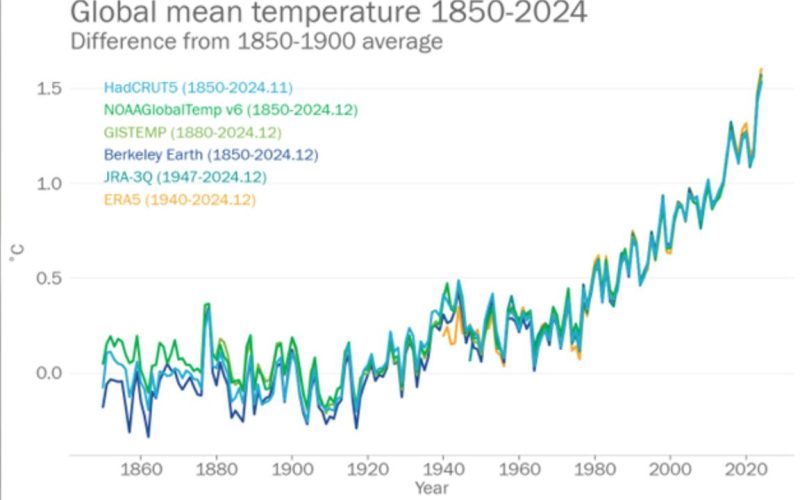The World Meteorological Organization (WMO) has confirmed that 2024 is the warmest year on record, based on six international datasets. The global average surface temperature was 1.55°C above the pre-industrial baseline of 1850–1900, marking the first calendar year likely to exceed the 1.5°C threshold. This milestone underscores the escalating impacts of global warming on the planet.
A separate study published in ‘Advances in Atmospheric Sciences’ identified ocean warming as a key driver of 2024’s record-breaking temperatures. The research, led by Professor Lijing Cheng of the Chinese Academy of Sciences, revealed that ocean heat content in the upper 2,000 metres reached unprecedented levels. From 2023 to 2024, ocean heat content increased by 16 zettajoules—140 times the world’s total electricity generation in 2023.
The study highlighted that oceans absorb around 90% of the excess heat generated by global warming, making ocean heat content a crucial climate change indicator. The persistent El Niño phenomenon, active from mid-2023 to May 2024, further exacerbated short-term temperature spikes.
The past decade has witnessed an extraordinary run of record-breaking temperatures, with all ten years ranking among the hottest on record. WMO Secretary-General Celeste Saulo stated, “Climate history is playing out before our eyes. Rising sea levels, melting ice, and extreme weather events are all being driven by record greenhouse gas emissions from human activity.”
Exceeding the 1.5°C threshold in a single year does not mean the Paris Agreement’s goals have been abandoned. These targets aim to limit long-term warming to well below 2°C, with efforts to stay within 1.5°C over an extended period. However, Saulo cautioned, “Every fraction of a degree of warming matters. Each increment intensifies the impacts on lives, economies, and ecosystems.”
UN Secretary-General António Guterres urged immediate and decisive action, stating, “Blazing temperatures in 2024 demand trailblazing climate action in 2025. Leaders must deliver updated climate action plans to curb warming and protect vulnerable communities.”
Policymakers are being encouraged to track global warming trends carefully to meet the long-term goals of the Paris Agreement and mitigate escalating risks. An international team of experts estimates long-term warming is currently about 1.3°C above pre-industrial levels, highlighting the need for sustained global efforts.
The WMO’s temperature assessment integrates data from multiple sources, including the UK’s Met Office, NASA, NOAA, the Japan Meteorological Agency, the European Centre for Medium-Range Weather Forecasts, and Berkeley Earth. The synchronised release of these datasets emphasises the exceptional conditions of 2024, aiding international climate monitoring efforts.





















